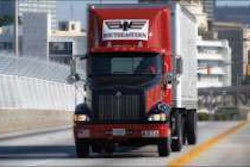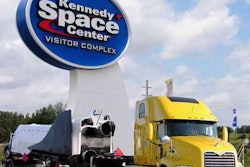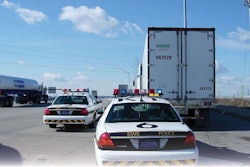
Fuel prices, freight patterns have some fleets thinking lighter
I’ve written a lot lately in this space about medium-duty commercial vehicles. Just last month, I examined the renewed interest in commercial-grade work vans. Now CCJ has devoted an entire special section to medium-duty trucks – commercial vehicles in Classes 3 through 6.
There’s a good reason CCJ has endured for more than a century to become the Grand Old Dame in business-to-business trucking magazines: An ongoing commitment to follow the equipment, technology and business trends in this industry – no matter where they lead. This was a hallmark of CCJ from its earliest days – and something that jumped out at the entire editorial staff as we culled through the archives pulling our 100th anniversary issue together in March.
Sometimes the results could be hilarious: In an early issue, I found a letter from a reader wondering why – in wet, icy weather – a box of sand couldn’t be placed above the drive wheels of a “commercial car” with a cable running to the cab. If the wheels lost traction in the slush, the driver simply could open the box, sprinkle some sand on the wheels and drive away. While that seems ridiculous today, the idea had enough merit at the time to warrant discussion in the magazine’s pages.
Medium-duty trucks have proven to be more lasting than a box of sand over a drive wheel. Every fleet on the planet uses them in some way: If they’re not primary vehicles, they surely play an important role as support vehicles. But now, as our industry sullenly accepts that fuel prices will remain relatively high from now on, some decades-old spec’ing practices are coming under the microscope, and medium-duty trucks are looking better all the time. And we here at CCJ aren’t the only ones who think so.
Medium-duty trucks are looking better all the time.
Last month at a Navistar “boot camp” for International Truck dealers in Salt Lake City, I asked Jim Hebe, senior vice president at Navistar, if his company was seeing an uptick in medium-duty sales, and if so, what he thought was driving it. “We’re definitely seeing fleets moving into the heavy-duty end of the medium-duty market,” he replied, saying that this year, J.B. Hunt has bought significant numbers of medium-duty trucks for use as primary fleet equipment.
“Freight distribution patterns in this country are changing, and medium-duty trucks – particularly heavy-duty delivery vans – are well-suited to these new delivery methods,” Hebe says. “Additionally, the one area where President Obama’s stimulus spending has worked is in the utilities market, and we’re seeing a definite uptick in small businesses coming back to the U.S. and Canada.”
A common refrain I hear is that the trucking industry traditionally is slow to adopt new technology and even slower to change. I dispute that notion; every fleet manager I know is passionately interested in cutting costs and doing things as efficiently as possible. They know the days of simply overspec’ing a Class 8 truck or tractor are gone – killed off by ever-increasing acquisition costs and permanently high fuel prices. They also know that for their fleets to survive, everything has to be on the table today: alternative fuels, hybrids, telematics and even the use of smaller trucks and vans when possible.
Heavy-duty Class 8 trucks and tractors always will be a part of the solution for fleets across the country, and frankly, there are a whole host of applications – particularly in heavy construction – where a Class 8 truck is the only option to get a tough job done; that never will change. But there are a number of fleets out there today that traditionally have depended on Class 8 vehicles and now – for the first time – are considering other options. If our readers are interested in something, CCJ’s editors are interested in it, too.
JACK ROBERTS is Executive Editor of Commercial Carrier Journal. E-mail [email protected] or call (205) 248-1358.











